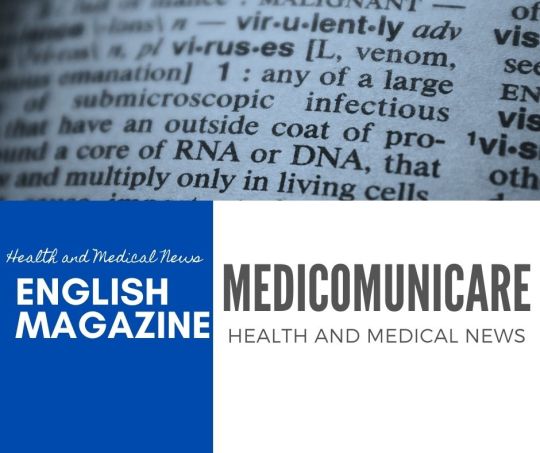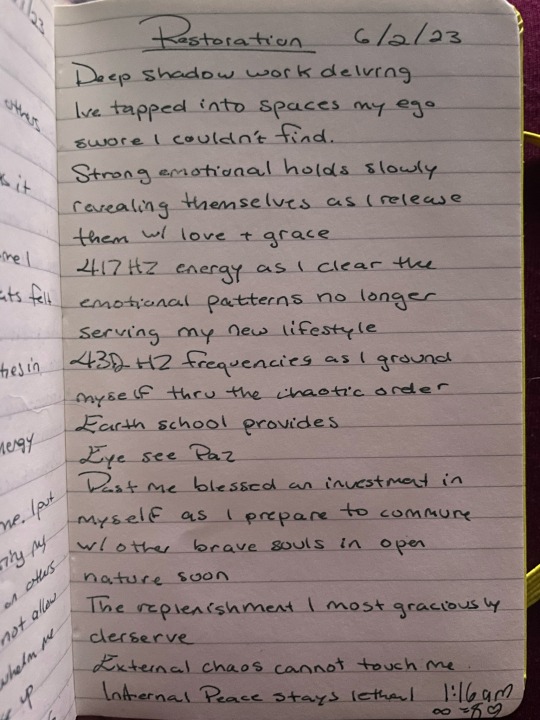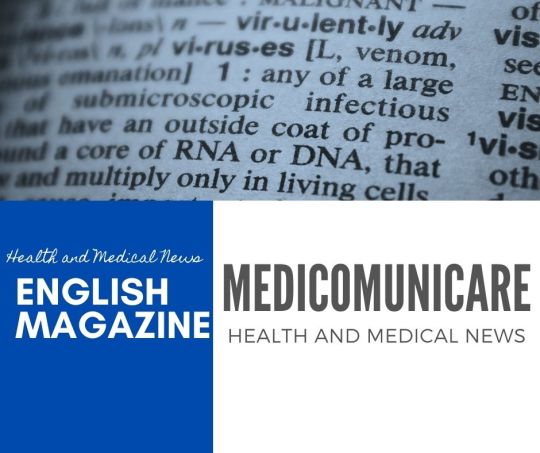#dna repair
Text
Top 3 Tips to protect against sun damage
Today most of us are aware of the potential dangers of sun over-exposure especially where cancer is concerned, but Sun damage also causes premature aging of the skin. Collagen and elastin in your skin helps keep it tight and wrinkle free, but the ultraviolet light in the sun's rays breaks down these fibers resulting in loose, thin, wrinkled and crepey skin and more. Learn more >
TIP #1
Choose a mineral sunscreen.
It can be overwhelming to select the right sunscreen, as hundreds are on the market. Therefore, I narrow my choice by only considering mineral sunscreens. Chemical sunscreens use chemicals to prevent UV rays from entering your skin by absorbing the rays with a chemical reaction. Mineral sunscreens use mineral particles to avoid UV rays from entering your skin, with a combination of absorbing, scattering, and reflecting the rays.
There is concern about the safety of chemical sunscreens. According to the EWG's Guide to Sunscreens, in recent FDA testing, all non-mineral sunscreen chemicals absorbed into the body could be measured in blood after just a single-use. In addition, many have been detected in breast milk and urine samples. These findings are troubling because they show sunscreen chemicals circulating in the blood. The FDA has indicated that the agency does not have enough information to determine whether the chemicals are causing harm.
Chemical sunscreens often have more ingredients to provide broad-spectrum coverage from UV rays, including preservatives, dyes, and fragrances, which can cause skin irritations.
Dr. Cynthia Bailey, MD, board-certified dermatologist, scientist, and wellness expert, does not recommend chemical sunscreen. "Over the course of my career, I have seen chemical sunscreens fail to provide reliable UV protection for my patients under real use conditions," she says. "I see surprise sunburns, tanning, and darkening of freckles during their skin exams—all of which indicate DNA skin damage."
"Physical sunscreens, on the other hand, have proven much more reliable," Bailey continues. The FDA has said that only two active sunscreen ingredients are recognized as safe and effective: These are the physical sunscreen UV filters zinc oxide and titanium dioxide. All others, meaning all chemical sunscreen UV filters, need further study. I don't recommend chemical sunscreens."
So, while chemical sunscreens are more readily available and often don't leave a white cast, it's essential to read the ingredients label. Safe ingredients to look for in sunscreen are titanium dioxide and zinc oxide.
TIP #2
Choose a sunscreen with SPF between 15 and 50.
In theory, sunscreen with a super-high SPF should give you the best protection against damaging UV radiation. But, according to experts, in practice, it doesn't work that way.
High-SPF sunscreens give you only slightly better protection than sunscreen with SPF 50, according to the Annual Sunscreen Report by the Environmental Working Group (EWP). At worst, they could give you a false sense of security and make you spend more time in the sun, upping your chance for burns and skin cancer. According to the EWG and the Skin Cancer Foundation, SPF 30 blocks nearly 97% of UVB radiation, SPF 50 blocks about 98%, and SPF blocks about 99%.
The EWG recommends choosing sunscreens within the SPF 15-50 range, applying a liberal coating, and reapplying every two hours and any time after swimming, toweling off, or excessive sweating. And, as I remind all of my daughters, do not forget to put sunscreen on your hands.
TIP #3
Protect from UVA Damage with Copper Peptides.
Even with a good sunscreen, too much sun can overwhelm the system's protective system. As the dose of UV radiation increases, the skin's antioxidant defenses get overwhelmed. As a result, free radicals form and cause cellular damage, such as oxidation modification of proteins and cellular DNA.
While free radicals and the sun's UV rays damage the skin's ability to regenerate, copper peptides can positively impact skin fibroblasts (cells that generate connective tissue), potentially combating UV damage to the skin barrier.
""I use Restoracell with copper peptides as a repair instead of a sunscreen per se,” says Dr. Turner. “It's a protection that allows your cells to go through DNA repair versus a sunscreen."
According to Dr. Suzanne Turner, MD, the Senior Physician at Vine Medicine in Atlanta and a specialist in cellular medicine and longevity, "The research is being done now with copper peptides, especially with irradiated skin and radiation in general. When you're out in the sun, damage occurs to radiated skin. The presence of copper peptides initiates the DNA repair process."
BONUS TIP
Apply Restoracell and sunscreen when driving. According to the Skin Cancer Foundation, while glass blocks UVB rays pretty well, it doesn't block UVA rays. Windshields are treated to shield drivers from some UVA, but side, back, and sunroof windows usually aren't. So when you're in your car, you should protect yourself and your family from the sunlight shining through the glass. (I keep sunscreen in my car for that purpose).
The same holds for windows on airplanes, trains, and buses. Have you ever felt like you're burning up sitting on the sunny side by an airplane window? Yes, you're being bombarded by UVA up there, too, and maybe even more so because of being at a high altitude. (Airline pilots and crew members tend to get more skin cancer than people in other professions.) skincancer.org/blog
To give yourself the best protection and repair while enjoying time in the sun, apply Restoracell with copper peptides, then follow with a good, mineral-based sunscreen with SPF between 15 and 50. And, don't forget the shade, hats, sunglasses, and clothing are part of the protection.
Best practice
Generally speaking, sunscreen should go on last—after eye cream, serum, moisturizer, and anything else you apply during your morning skincare routine. Apply makeup after sunscreen. (Wait a few minutes for it to absorb completely before reaching for your foundation.)
#skincare#peptide#sunscreen#spf#antiaging#sun damage#skin protection#dna repair#cell repair#youthful skin#pro-aging
23 notes
·
View notes
Link
A team of UCSF, UCSD, and Brown University scientists has produced a multi-scale map of protein assemblies pertaining to damage response. The DNA Damage Response (DDR) makes sure that DNA replication, as well as transcription, are error-free. Disruptions in DDR cause several diseases. It is quite challenging to determine the proteins managing the DDR as well as their organization into several complexes, including constitutive interactions. The authors have addressed this challenge by systematically mapping DDR assemblies at multiple scales using multi-conditional network analysis. They performed a comprehensive screen for protein interactions on 21 DDR factors. They further incorporate existing proteomics data to construct a map of DDR protein assemblies, DDRAM. With a total of 605 proteins organized into a hierarchy of 109 assemblies, DDRAM also recovers canonical repair mechanisms and proposes new DDR-associated proteins.
A sophisticated network of machinery has evolved in organisms to guarantee the efficient operation of cells and to protect the integrity of the genome. This machinery is known as the DNA Damage Response (DDR). This machinery includes repair pathways that include different kinds of DNA lesions for direct reversal, base excision repair (BER), nucleotide excision repair (NER), mismatch repair (MMR), interstrand cross-link repair (ICL), and double-stranded break (DSB) repair. Apparatus for communicating the damage is also included in the DDR toolkit. The apparatus for damage sensing, signal transducers for communicating the damage to repair factors and downstream effectors, as well as connections to stress and apoptotic responses. DDR is also intertwined with cell-cycle checkpoints, chromatin packaging, and DNA replication. Through these processes, DDR involves thousands of gene expression and protein modification changes.
Continue Reading
4 notes
·
View notes
Link
528Hz frequency which encourages us to restore human consciousness to its full power and potential is known as miracle tone, sensational tone, and frequency of transformation. Nasa scientists recorded that 528Hz resonates at the heart of the sun.
#528 hz frequency#pure tone#dna repair#nerve regeneration#healing sound therapy#binaural beats sound therapy
3 notes
·
View notes
Text
USP15: from brain inflammation to cancer, the master-zyme tags the repair and shows itself as a target
USP15: from brain inflammation to cancer, the master-zyme tags the repair and shows itself as a target
Ubiquitin is a highly conserved peptide molecule, composed of 76 amino acids that mark proteins for degradation. Protein ubiquitination changes proteins half-life and tightly regulates the levels of proteins that should be erased before they start to put in danger cellular homeostasis. Ubiquitination often affects protein stability, localization, activity, and interactions, and is widely involved…

View On WordPress
#anticancer drug#brain cancer#breast cancer#cancer cells#cellular stress#DNA damage#DNA repair#genome integrity#mutation#neuroinflammation#pancreatic cancer#Parkinson disease#tumor suppressor#ubiquitina
5 notes
·
View notes
Video
youtube
528 Hz Healing Frequency: Repair DNA, Inspire Change, Miracle Tone - Pro...
0 notes
Text
Nanoparticles Deliver Treatment Directly to Tumors of Deadly Brain Cancer - Technology Org
New Post has been published on https://thedigitalinsider.com/nanoparticles-deliver-treatment-directly-to-tumors-of-deadly-brain-cancer-technology-org/
Nanoparticles Deliver Treatment Directly to Tumors of Deadly Brain Cancer - Technology Org
Using nanoparticles administered directly into the cerebrospinal fluid (CSF), a research team has developed a treatment that may overcome significant challenges in treating a particularly deadly brain cancer.
The researchers, led by professors Mark Saltzman and Ranjit Bindra, administered to mice with medulloblastoma a treatment with specially designed drug-carrying nanoparticles. The study, published in Science Translational Medicine, showed that mice who received this treatment lived significantly longer than mice in the control group.
Medulloblastoma, a brain cancer that predominantly affects children, often begins with a tumor deep inside the brain. The cancer is prone to spread along two protective membranes known as the leptomeninges throughout the central nervous system, particularly the surface of the brain and the CSF. Leptomeningeal spread is seen in a number of primary brain tumors, as well as in brain metastases from solid tumors in the breast, lung, and other places. Because there are no anatomic barriers in the CSF to prevent further growth, these cancers can spread rapidly.
Targeting tumors in the CSF has proven difficult, in part because the fluid rapidly cycles through the central nervous system about four times a day in humans, typically flushing away anti-tumor drugs before they’ve had a chance to accumulate and have any effect.
“It’s like a waterfall system, with a fast, rapid fluid flow,” said Minsoo Khang, lead author of the study and a former graduate student in Saltzman’s lab.
To overcome this obstacle, the research team fabricated nanoparticles that adhere to tumors. Designed in Saltzman’s lab, these nanoparticles are made with degradable polymers that slowly release a DNA repair inhibitor, talazoparib, which is FDA-approved and currently used in the clinic for a number of cancers. The drug is one of a relatively new class of cancer drugs known as PARP inhibitors, which block an enzyme that helps repair DNA. Without the ability to repair their DNA, tumor cells are more likely to die.
The nanoparticle treatment is injected intrathecally – that is, it’s delivered directly between the leptomeninges protecting the CSF. Over a period of weeks, the researchers detected the presence of the nanoparticles in the CSF for as long as 21 days after a single dosing.
“We were very excited to have found a medium that has long-term retention in this fluid space, which is otherwise challenging,” Khang said.
Treating brain cancers in general is challenging since few treatments can penetrate the blood-brain barrier, a natural defense system that can block potentially helpful drugs. The research team’s method could offer a solution.
“There’s been very little work on intrathecal delivery of nanoparticles, so we’re very excited because it can allow us to go after the leptomeningeal spread of disease from brain metastases,” said Bindra, the Harvey and Kate Cushing Professor of Therapeutic Radiology and Professor of Pathology. “This has really opened up an entirely new way to treat these patients, although much more work needs to be done.”
Using the nanoparticles to target the tumors allowed the researchers to use the drug talazoparib, which has proven to be effective in a number of solid tumors outside of the brain. Because the drug has limited to no penetration of the central nervous system, however, an orally delivered dose would have limited efficacy against tumors with leptomeningeal spread.
“By encapsulating it in a nanoparticle and directly injecting it into the CSF, we now get very high exposure in just that area,” said Saltzman, the Goizueta Foundation Professor of Biomedical Engineering, Chemical & Environmental Engineering & Physiology, and a member of Yale Cancer Center.
Delivering the drug intrathecally also avoids injecting it directly into the brain, a technique referred to as convection-enhanced delivery. This very challenging procedure can be performed only a few times a year. Intrathecal injections, in contrast, are much less invasive and can be given without a hospital stay.
“This is huge for us, because now we can do multiple nanoparticle treatments over time,” Bindra said.
In addition to the nanoparticle injection, mice were also given an oral dose of a chemotherapy drug known as temozolomide.
“It’s a new platform where we can give these oral chemotherapies that get across the blood-brain barrier and a targeted agent just in the central nervous system,” Bindra said. “In essence, this compartmentalization of combination therapy will enhance synergistic tumor cell killing while minimizing systemic toxicity.”
The mice that received the nanoparticle-based treatment lived significantly longer than the mice who received drug therapy that didn’t use nanoparticles and even longer than the mice that received no treatment. Further, there was much less cancer spreading in the mice that received the drug-carrying nanoparticles.
The researchers said the next steps will be to validate the approach in larger animal models, eventually followed by human testing. The team also plans to test the treatment method on other cancers, particularly those that tend to spread to the brain.
Source: Yale University
You can offer your link to a page which is relevant to the topic of this post.
#amp#approach#barrier#Biotechnology news#blood#blood-brain barrier#Brain#brain cancer#brain tumors#Cancer#cancer drugs#cell#Cells#chemical#chemotherapy#Children#defense#Disease#DNA#DNA repair#drug#drugs#engineering#Environmental#enzyme#FDA#Foundation#growth#human#humans
0 notes
Text
#528 Hz#Love Frequency#Miracle Tone#Sound Healing#Meditation#Solfeggio Frequencies#Chakra Balancing#Green Color#Heart Chakra#Emotional Healing#DNA Repair#Alternative Healing#Spiritual Growth
0 notes
Text

Just for Today, 6/2/23: Present P Power 🌳🌺
Right Now is powerful.
0 notes
Text



I think the blue man underestimates me but I don’t think the red guy does there’s a problem and I need to get to Texas or something like that. Do you understand maybe I need to stop speaking in riddles and songs.
Maybe some of you guys need to fucking shut your mouthS racist Cunts
That’s the big problem right there that’s the big big fucking problem. Those fucking racist bitches.


The intelligent middle class in America understands what I’m talking about
Ehhh. Anyway, lost assholes. Mds voted them down.
Yeah, I’ll bet some MDs have been crossing terrific and good lines today, because ego.
So many piss poor MDs. Others had to show their asses and added
Unlike Travis woot woot
Everything’s like a commercialized joke isn’t it everybody’s either China, Russia, or a fake Hispanic


If I were a medical doctor, would I cross that line to save lives in the lower class communities? Yes, I would.
You guys need to understand though that I don’t have any proof that medical doctors have absolutely crossed some lines to do the good thing here we do have a lot of good happening yes, but cigarettes are not good for you and all of that
Medical doctors have been spoiled. I can’t stand most of these motherfuckers.
Gramma and Ashley said, “hmm, Stephanie tried to get into med school on your dime.”
Ned school gosh.
That’s why everybody voted to lock her in a sarcophagus, and she would never ever cross that line. No, you actually did not but you did make a joke of yourself.
When people take things from people like me, things get dicey, so Ned, I guess you could say he’s something of a friend yeah
Omg Stephanie wants to disappear but had no shame trying to plagiarize my work?
Red red red
You guys do none of the studying, but then you expect to be taken seriously as human beings
#dr. William J Travis MD#Adding#crispr cas9#cancer cures#DNA repair#investigative MDs#Racism#Fuck you China#excuse me#fuck some of you :)#I’m right yes#Latinx#jokes
0 notes
Text
youtube
#stimulation#activation#cell repair#dna repair#healing#energy cleansing#stimulate healing#solfeggio frequencies#chakra meditation music#chakras healing#pineal gland activation#lofi lotus#frequency#meditation#stress relief#miracle tones#meditation de guerison#infertility meditation#meditation pour dormir#meditation zum einschlafen#meditation gegen stress#cord cutting meditation#mindfulness meditation#transcendental meditation#lotus records#lofi records#Youtube
1 note
·
View note
Text

All Natural DNA Repair
Now Available!
www.remissiontrees.com
⛽️🚚
#self care#patient’s rights#cancer#cancer kids#cannabis#cannabis community#cancer cure#patients rights#patients choice#take care of you first#take care y'all#Matthew 22:37&39#remissiontrees#thanks for reading#remission#dna repair#all natural remission#ptsdawareness#ptsdwarrior#ptsd problems#ptsd recovery#recovery#1 love#onelove#thankful
0 notes
Text

iteratorsona and his two eepers
#i love my chronically online supercomputers#also his nickname in gcs is red melody#my art#art#rain world#rw#rain world oc#iterator oc#slugcat oc#beast is a scug taken in as a pup after getting survivored#noble is a purposed organism made with beast's dna to deliver messages and repair rm's superstructure
9 notes
·
View notes
Link
For people who are suffering from numerous mental circumstances, this session can be helpful such as fear, schizophrenia, illusion, anxiety, depression, etc., and triggers your subliminal mind to know your determination in life.
#432hz#deep healing meditation music#dna repair#relaxation music#deep healing music#binaural beats sound therapy
0 notes
Text
When the fight against disease gets colorful: formerly tissue dyes as bioactive molecules as well
When the fight against disease gets colorful: formerly tissue dyes as bioactive molecules as well
Histological staining is a series of technique processes undertaken in the preparation of sample tissues by staining using histological stains to aid in the microscope study. Histological studies are used in forensic investigations, autopsy, diagnosis and in education. In addition, histology is used extensively in medicine especially in the study of diseased tissues to aid treatment. In…

View On WordPress
#Alzheimer#anticancer drug#cell death#cell replication#cellular signaling#DNA repair#gene epression#hystology dyes#inflammation#natural dye#oncogene#protein kinase#protein synthesis#signal transduction#transcription factor
0 notes
Text
*accidentally spread misinformation voice* I just want to clarify, as unfortunate as it is, Jedikiah and Irene do not actually brain meld in canon. He does drug her unconscious and steal her powers, but the timeline in which he both gifts her someones else’s powers so she gets them back and gives himself brain damage so his own brain radio-signal thing is rewritten into hers & links them irrevocably only exists in my brain.
#he gives himself brain damage by forcing his newly acquired powers to work immediately instead of letting them break out#burning himself out and leaving only her dna for his brain to repair itself with#putting them on the same wavelength so to speak#ttp#(the ‘everyone has their own brain signal’ thing is canon btw I didn’t make that part up)
5 notes
·
View notes
Text

So glad the fandom has no control over the canon of this series, istg these takes are so bland and would ruin Jojo's.
#not to be That Guy but this person clearly didn't understand/care for the story Araki was telling with both parts 5 & 6 respectively#low hanging fruit finding some rando spouting off about how they want to scrap stone ocean but hey#no it would not have been more impactful for any of dio's kids to have ended the joestar curse actually#wtf are you on#''the joestars should have been completely helpless against their foes & fate unless they possessed some of their enemies' DNA'' 🤢#and although giorno reflects both dio and jonathan in his design his story and hos characterization the whole point of his adventure was#defining himself and achieving his goals without being held back by the entrenched workings of society/the mob + his past home life + fate#Jolyne's journey is (in part) about severing a fate she did not consent to and that had fractured her life seemingly beyond repair#giorno has nothing to do with her journey & he (having brando + joestar blood) is not ''more worthy'' of ending the curse#to branch off into yet another tangent: i've become annoyed by the constant nattering of fans regarding giorno not meeting pucci as#ungalo et al did. pucci's gravity wasn't gathering every single one of dio's spawn to one point#it specifically drew to him the children who had fallen into lives of disorder/dismay/disrepair. those who are lost#it wasn't just ''all of dio's blood whoops araki forgot giorno 🤪'' it was following the themes of part 6#but of course many jojo fans are notoriously allergic to seeing the themes of each part & care more about fan service than anything else#might make a bigger post about this one of these days lol
18 notes
·
View notes